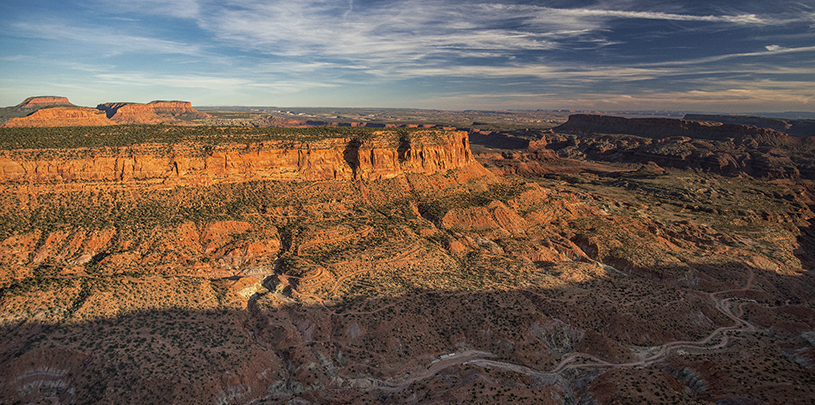 by Amber Reimondo, Energy Director
by Amber Reimondo, Energy Director
On January 17, 2017, the Environmental Protection Agency (EPA) updated its rule meant to curb toxic air pollution from radioactive uranium-milling wastes like those generated by the White Mesa uranium mill in southeast Utah. This was the first update to the rule since 1989.
Under the Clean Air Act, the EPA regulates emissions of hazardous air pollutants, which are known to cause cancer and other serious illnesses. One of the 187 contaminants currently listed by the EPA as a hazardous air pollutant is radon, a gas produced by the radioactive decay of uranium. Radon is emitted from the waste tailings generated by uranium mills and other uranium-recovery facilities. Those emissions are regulated by a rule called “Subpart W.”
In 2014, the Trust and many of our members commented on the EPA’s proposed revisions to Subpart W. Thanks to public comments, the EPA made some positive changes to the proposed rule. Most important, an existing numeric limit on radon emissions that the agency had planned to eliminate was instead retained, with a few modifications. That will make it easier for the public to keep tabs on how much radon is being put off by some of the White Mesa Mill’s wastes, and it maintains a clear line as to exactly what amount of radon emissions is prohibited.
The agency, unfortunately, made some other changes that may turn out badly for public health and the environment. One of the major goals of the EPA’s rule is to force uranium producers to clean up the messes they make as they go. That reduces the hazards posed by the industry’s wastes — and leaves a smaller mess for taxpayers to clean up — if those producers abandon their facilities without reclaiming them. The new rule still has that objective, but it may let some facilities keep a much larger waste area open and defer reclamation costs to the detriment of the environment, the public’s health, and the public purse.
Although it will take some time to judge exactly how the EPA’s new rule will work on the ground, one thing is clear now: The EPA should have looked at ways to further reduce radon emissions from uranium-processing wastes. When the EPA regulates emissions of hazardous air pollutants like radon, the agency’s first step is to require industry either to reduce emissions as much as technologically possible or to use “generally available” technologies to control emissions. In its revisions to Subpart W, the EPA chose to require only that “generally available” technologies be used, meaning that the agency didn’t look into whether greater reductions in radon emissions were possible. We think that decision was out of step with the Clean Air Act, and, because of it, there’s no way for the public to be sure that the restrictions the agency imposed are truly the most appropriate for protecting the environment and human health.
For people living near the White Mesa Mill, the fact that the revised rule retained some protections may come as a small comfort. The mill’s wastes will remain radioactive for lifetimes, and unless they’re dug up and buried elsewhere, they’ll continue to pose a threat to the environment and those living nearby. We believe places like White Mesa, Utah, that brave the menace of the uranium industry’s radioactive wastes, deserve a tougher rule. But we don’t intend to let the rule that the EPA wrote get in the way of our commitment to pressing for the White Mesa Mill to be properly cleaned up.




